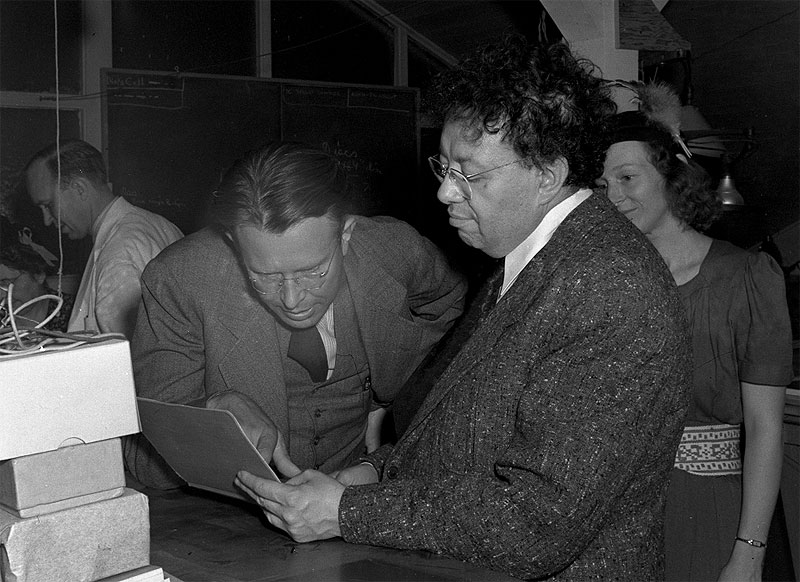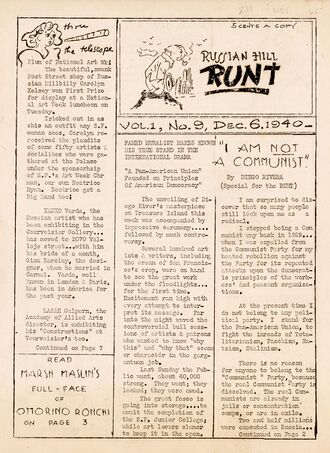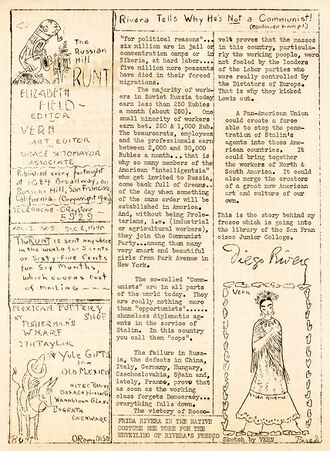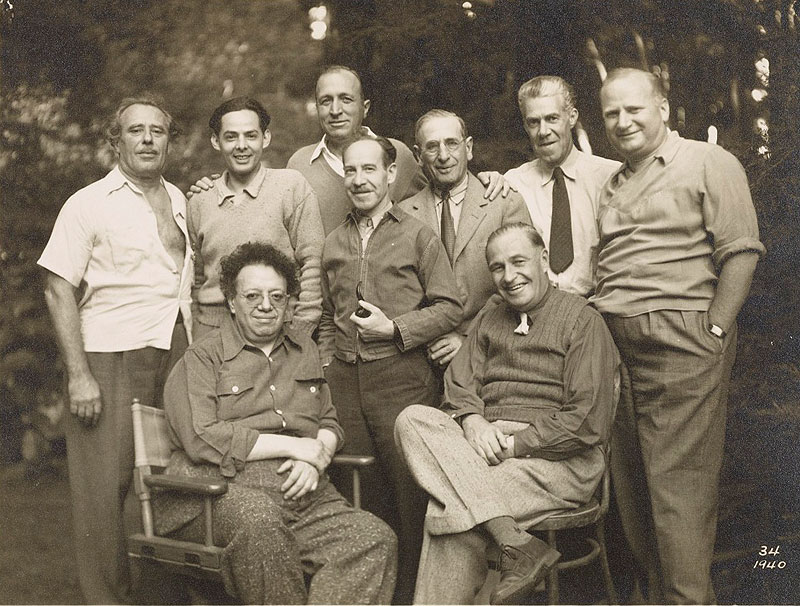Diego Rivera, Technology, and Communism
Historical Essay
by Will Maynez
Excerpted from a longer post at the "Friends of Diego" Newsletter, September 2023.
Ernest O. Lawrence, Diego, and Emmy Lou Packard at UCB’s Rad Lab
Photo: National Archives
The few “degrees of separation” paradox that characterizes the Diego Rivera in San Francisco story has struck again. Just saw the film Oppenheimer and was reminded of a Rivera connection. The above picture shows Diego and his assistant Emmy Lou Packard visiting Ernest O. Lawrence at the Rad Lab (Radiation Lab) at UC Berkeley on Aug. 28, 1940, a couple of years before J. Robert Oppenheimer appeared and the issue of the bomb arose. Diego might have been the first communist (who wasn’t a scientist) to visit there. The book they are perusing is unknown. Rivera was very inquisitive and one of the main dualities he incorporated in the Pan American Unity mural is the reconciliation of Art and Science. The very first characters that the Mexican artist wanted in the mural were Samuel F.B. Morse and Robert Fulton. A Pflueger note while on his April 1940 Mexico City visit was to follow up with research on the two inventors for Rivera’s use. Morse had obliterated time with his invention of the telegraph and Morse code. Now messaging was “instantaneous.” (It is a revelation to some younger mural visitors that messaging hasn’t always been “instantaneous.”) Fulton obliterated space with his working steamboat and now travel was not dictated by the wind. Ever the engineer Rivera was enthused that these two great inventors were also artists.
Oppenheimer’s relationship with communism mirrors Rivera’s; neither was able to toe the line. Rivera had been expelled from the PCM, the Mexican communist party in 1929. The Mexican artist wanted an indigenous party, not one controlled by Stalin from Moscow. American Prometheus author Kai Bird in a New Yorker podcast, said Oppenheimer “was not the kind of man to submit himself to party discipline.” However, though it seems that the scientist did join the party, he denied it during security clearance hearings. Diego went so far as to script an article for the Russian Hill Runt, “I Am Not A Communist.”
Russian Hill Runt, Dec. 6, 1940. Click to enlarge
Though, philosophically, both were communists, they needed to unload that baggage, which hindered their agendas. In 1940 Diego had finally gotten his foot back in the door after the exile from the US over the Rockefeller incident, ostensibly for his inclusion of a portrait of Lenin in the mural. Mental reservations were made for the “greater good” as these titans perceived them. (A Russian Hill Runt newsletter drawing confirms that Frida went to the public opening of the mural in early December, though she had told Dr. Eloesser she was not interested in attending the private opening on November 29, when “all those dames” would be there.)
Ambiguity infuses these stories with ironies. Rivera depicted Stalin as one of the bad guys. Yet by June 1941, just seven months after the mural was finished, he was an ally, “Uncle Joe”, after Hitler invaded the USSR with Operation Barbarossa. By the end of the war both Diego and Frida were Stalinists. Oppenheimer led the construction of the bomb, but later campaigned against its use. But it was he who had opened Pandora’s Box.
Here is Rivera in 1940 with some members of The Family Club, a split off from the Bohemian Club. These are mainly artists Rivera met on his first 1930 visit. Left to Right, Standing Lucien Labaudt (Beach Chalet), Antonio Sotomayor (Grace Cathedral), José Moya del Pino (Coit Tower), Otis Oldfield (Coit Tower), William Gerstle (SF Art Institute), artist Phil Little, architect Timothy Pflueger, seated are Diego Rivera and Charles Black (head of PG&E and Shirley Temple’s father-in-law).
Photo: Lucien and Marcelle Labaudt papers, 1896-1987. Archives of American Art, Smithsonian Institution.




